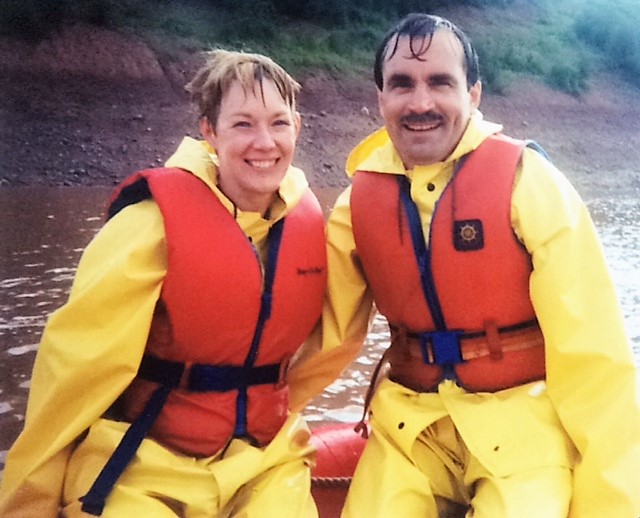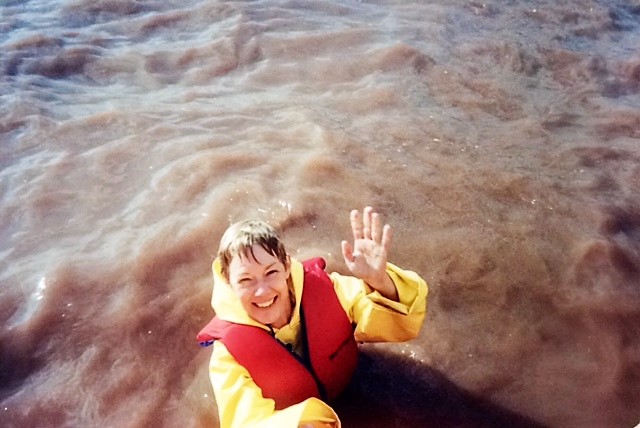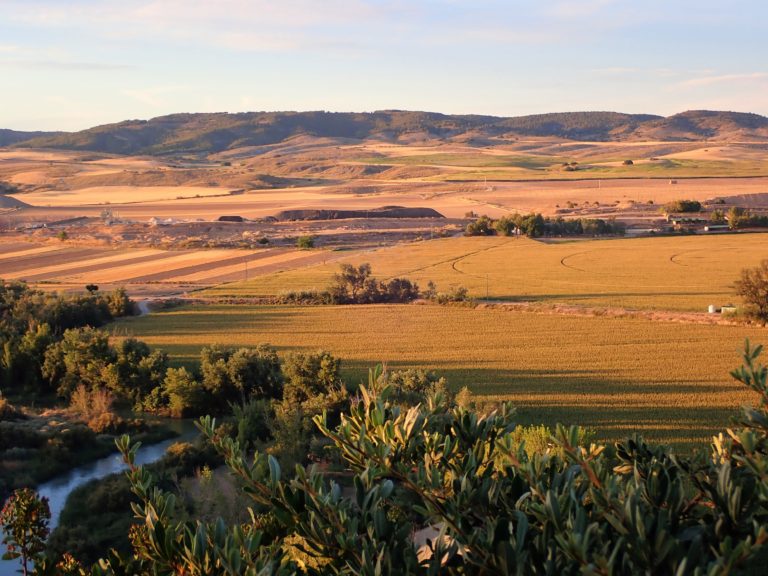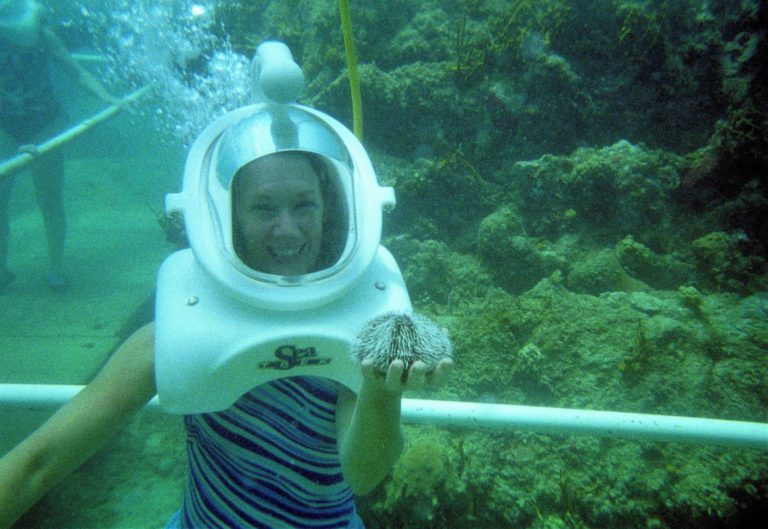Rafting the Magnificent Tidal Bore in Nova Scotia
On To New Adventures contains affiliate links and is a member of the Amazon Services LLC Associates program. If you make a purchase through our affiliate links, we may receive compensation from the company at no cost to you. Read our disclaimer for more information.
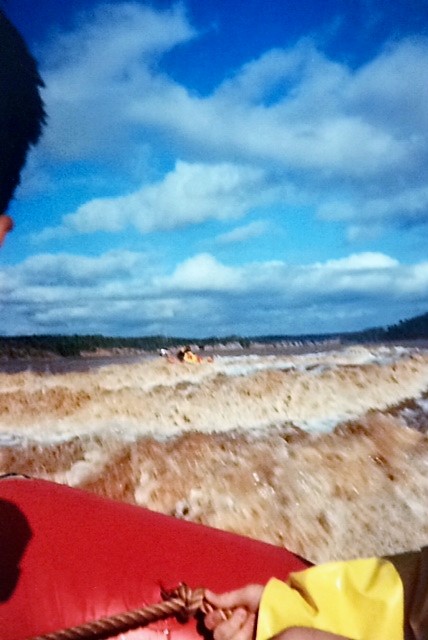
Our Zodiac crested a small incoming wave. “That was nothing!” hollered the raincoat- clad seventh grader at the front of the raft. “Bring it on!” I glanced over my shoulder toward our guide at the helm. He smiled and shrugged his shoulders, and obligingly turned us toward some swirling rapids. The bright orange nose of our raft plunged straight downward. In the next instant, a wall of muddy brown water loomed up from nowhere. I had a split second to grab hold of the safety rope before the wave crashed down on us. I gasped at the force of the water and clung to the rope for dear life. Cold water poured into my rain jacket and rain pants, making me wonder why I’d even bothered to put them on.
When we emerged from the other side of the wave, my 13 year old friend was lying in the bottom of the raft. He spat out a mouthful of chocolate colored water and managed to grab one of his boots that had been torn off his foot just before it washed over the side. Much of his bravado had been swept away. There was a new respect in his eyes as he frantically looked around in search of the next wave. He checked to be sure that his life jacket was still securely fastened. (Our guide had nonchalantly pointed out the handle on the back of our life jackets: just in case he needed to grab on and haul one of us out of the water) It suddenly dawned on us all what we were in for during the next hour and a half: rafting the tidal bore.
David and I had arrived in Digby, Nova Scotia a few days earlier. We checked into a lovely B& B called The Thistle Down Country Inn, and then set out to take a walk around the harbor. We were rather surprised to see that the boats weren’t neatly moored at the dock as they are back home. In fact, a number of fishing boats were resting high and dry in the mud, a good thirty feet below us.
“Why on earth would anyone want to climb down all of those steep ladders to get to their boat?” I wondered aloud. David was equally perplexed. We didn’t know much about Nova Scotia. Which of course was one of the reasons that we decided to go there.
As we soon learned, the Bay of Fundy in Nova Scotia is home to the highest tides in the world. The incoming tide can raise over 50 feet in a matter of hours. By nightfall, those fishing boats were floating comfortably in the water adjacent to the dock.
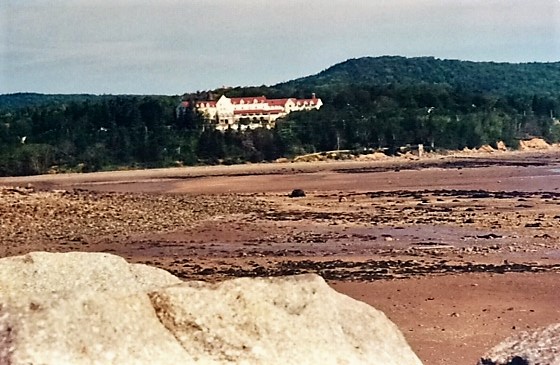
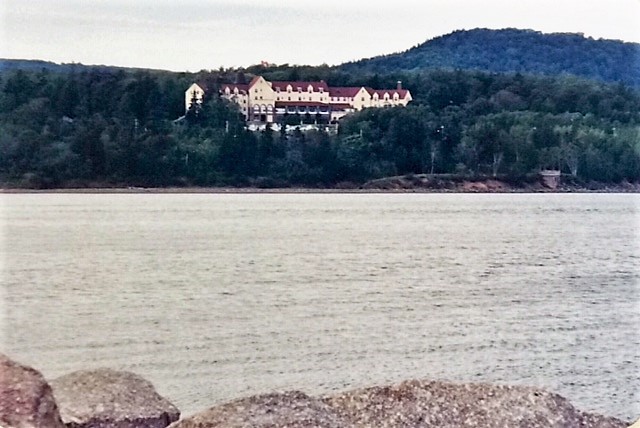
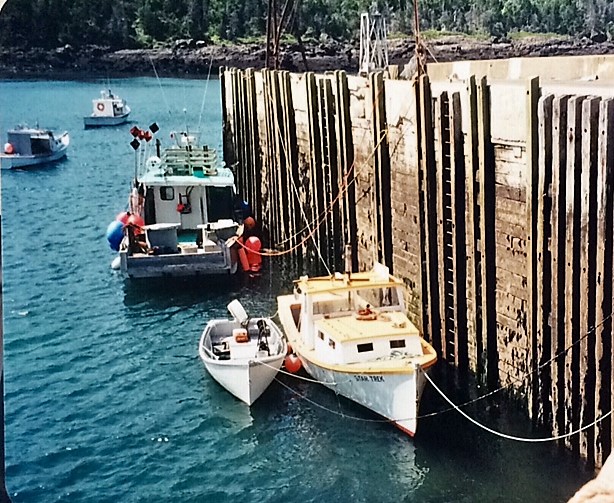
David and I had signed up for a whale watching excursion in the Bay of Fundy a couple of days later. We drove our rental car to Wolfville and stayed at a charming B& B called The Gingerbreadhouse Inn. Upon our arrival, we learned that high winds and strong waves were keeping the whales far out to sea. We were disappointed to cancel our reservation. Luckily, our affable inkeeper recommended we try rafting the tidal bore, a unique experience that can only be done only in a few places around the world. Were we ever glad to have followed his advice!

Normally, a river will flow from a higher elevation down to a sea or ocean. A tidal bore occurs when a strong incoming ocean tide pushes up into the river against the outgoing current. The small rivers of Novia Scotia that pour into the Bay of Fundy, home to majestic humpback whales, porpoises and thousands of seabirds, are among the best places to observe this phenomenon. The best river for rafting the tidal bore? The mighty Shubenacadie.
Much of the time, the Shubenacadie River flows quietly enough between sand flats and high cliffs, eventually flowing into the Bay of Fundy. For several hours each day the tidal bore transforms the peaceful Shubenacadie into a churning stretch of whitewater rapids. Water piles up fast as it is squeezed by the narrowing bay and the shallow river bottom. This creates a low wave called a bore that rolls up the river, causing the river to reverse its direction.
David and I were assigned to a Zodiac raft, along with a group of junior high boys from Texas. The river was calm that afternoon as we set out on our journey. Bald eagles soared overhead and nested in the trees atop the cliffs that towered 200 feet above us. Our guide beached our raft on a twenty two acre sand bar and we all walked around to stretch our legs and wait for the famous wave .
The tidal bore didn’t look like much as it first approached. A ripple, really. The wave seemed inches high as it sped toward us. Huh? That was it? But the bore washed over the sand bar in a matter of minutes, and the muddy water rushed into my knee-high rubber boots as we scrambled to get back into the raft.
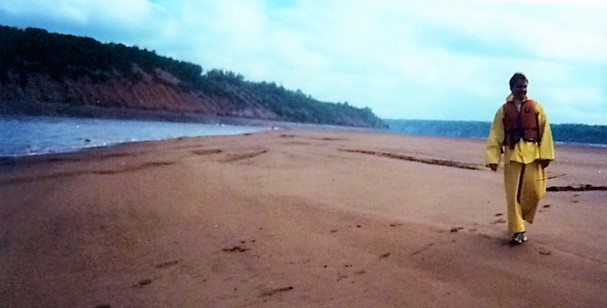
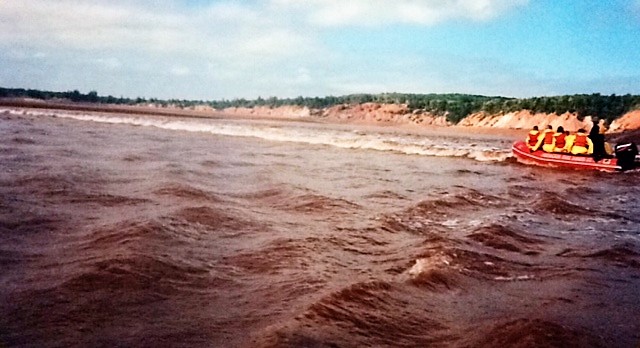
For more than an hour we followed the bore as it raced upstream, crashing through its waves time and time again. The formerly placid Shubenacadie thundered upstream, becoming a rollercoaster with waves up to sixteen feet high. Later on, when we retraced our path, the sand bar where we had walked earlier was now under nearly thirty feet of water! The high cliff tops were no longer towering, and the soaring eagles were flying mere feet above us.
My teeth were chattering when we finally climbed out of the raft. “That was awesome!” exclaimed my young friend, as he peeled off his rain gear. He joined the other students swarming toward the restrooms, to trade their sopping wet clothes for something dry. I made a beeline straight to the hot chocolate station. At last, it was my turn to change clothes in the restroom. I didn’t even bother trying to wring out dripping jeans and tee shirt. I tossed them straight into the trash, as they were forever stained by the reddish-brown silt of the mighty Shubenacadie.
Thinking that rafting the tidal bore sounds a bit dangerous? No worries. The river guides are very experienced and they actually do all of the work. No paddling involved. Hang on and enjoy the thrill! If you go, know that you are going to get drenched. And your clothes will be trashed, so don’t wear anything that you care about. Wear sunscreen, but skip the sunglasses unless you don’t mind losing them. Therre are several River Rafting Companies to choose from, including Fundy Tidal Bore Adventures, Shubenacadie River Adventure Tours, and The Tidal bore Rafting Resort.
